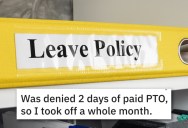This Day In History – December 7th

OUTLAW JESSE JAMES COMMITS HIS FIRST BANK ROBBERY
DECEMBER 7, 1869

Jesse Woodson James (September 5, 1847 – April 3, 1882) was an American outlaw, gang leader, bank robber, train robber, and murderer from the state of Missouri and the most famous member of the James-Younger Gang. He also faked his own death and was known as J.M James. Already a celebrity when he was alive, he became a legendary figure of the Wild West after his death.
Jesse James did not become famous until December 7, 1869, when he and (most likely) his brother Frank robbed the Daviess County Savings Association in Gallatin, Missouri. The robbery netted little money, but it appears that Jesse shot and killed the cashier, Captain John Sheets, mistakenly believing him to be Samuel P. Cox, the militia officer who had killed his friend during the Civil War. James’s self-proclaimed attempt at revenge, and the daring escape he and Frank made through the middle of a posse shortly afterward, put his name in the newspapers for the first time.
On April 3, 1882, Jesse James was killed by Robert Ford, who was a member of the gang living in the James house and who was hoping to collect a state reward on James’ head. [Source]

JAPAN ATTACKS PEARL HARBOR – DECEMBER 7, 1941

The attack on Pearl Harbor was a surprise military strike conducted by the Imperial Japanese Navy against the United States naval base at Pearl Harbor, Hawaii, on the morning of December 7, 1941 (December 8 in Japan). The attack was intended as a preventive action in order to keep the U.S. Pacific Fleet from interfering with military actions the Empire of Japan was planning in Southeast Asia against overseas territories of the United Kingdom, the Netherlands, and the United States.
The base was attacked by 353 Japanese fighters, bombers and torpedo planes in two waves, launched from six aircraft carriers. All eight U.S. Navy battleships were damaged, with four being sunk. All but two of the eight were raised, repaired and returned to service later in the war. The Japanese also sank or damaged three cruisers, three destroyers, an anti-aircraft training ship, and one minelayer. One hundred eighty-eight U.S. aircraft were destroyed; 2,402 Americans were killed and 1,282 wounded. The power station, shipyard, maintenance, and fuel and torpedo storage facilities, as well as the submarine piers and headquarters building (also home of the intelligence section) were not attacked. Japanese losses were light: 29 aircraft and five midget submarines lost, and 65 servicemen killed or wounded. One Japanese sailor was captured.
The attack came as a profound shock to the American people and led directly to the American entry into World War II in both the Pacific and European theaters. The following day the United States declared war on Japan. Domestic support for isolationism, which had been strong, disappeared. Clandestine support of Britain (for example the Neutrality Patrol) was replaced by active alliance. Subsequent operations by the U.S. prompted Germany and Italy to declare war on the U.S. on December 11, which was reciprocated by the U.S. the same day.
There were numerous historical precedents for unannounced military action by Japan. However, the lack of any formal warning, particularly while negotiations were still apparently ongoing, led President Franklin D. Roosevelt to proclaim December 7, 1941, “a date which will live in infamy”. [Source]

Aerial view of the U.S. Naval Operating Base, Pearl Harbor, Oahu, Hawaii (USA), looking southwest on 30 October 1941. Ford Island Naval Air Station is in the center, with the Pearl Harbor Navy Yard just beyond it, across the channel. The airfield in the upper left-center is the U.S. Army’s Hickam Field.

U.S. Navy sailors in a motor launch rescue a survivor from the water alongside the sunken battleship USS West Virginia (BB-48) during or shortly after the Japanese air raid on Pearl Harbor, 7 December 1941. USS Tennessee (BB-43) visible behind West Virginia. Note extensive distortion of West Virginia´s lower midships superstructure, caused by torpedo hits below. Also note 5″/25 gun, still partially covered with canvas, boat crane swung outboard and empty boat cradles near the smokestacks, and base of radar antenna atop West Virginia´s (BB-48) foremast.

U.S. Navy battleships at Pearl Harbor on 7 December 1941 (l-r): USS West Virginia (BB-48) (sunk), USS Tennessee (BB-43) (damaged), and the USS Arizona (BB-39) (sunk).
DEADLIEST HOTEL FIRE IN US HISTORY AT THE WINECOFF HOTEL IN ATLANTA – DECEMBER 7, 1946

The Winecoff Hotel, today the Ellis Hotel, is located at 176 Peachtree Street NW, in downtown Atlanta, Georgia, USA. Designed by William Lee Stoddart, the 15-story building opened in 1913.
The Winecoff is best known for a fire that occurred there on December 7, 1946, in which 119 people died. It remains the deadliest hotel fire in U.S. history, and prompted many changes in building codes. Guests at the hotel that night included teenagers attending a Tri-Y and Tri-Hi-Y Youth Conference, Christmas shoppers, and people in town to see Song of the South. Arnold Hardy, a 26-year-old graduate student at Georgia Tech, became the first amateur to win a Pulitzer Prize in photography for his snapshot of a woman in mid-air after jumping from the 11th floor of the hotel during the fire. The jumper, who survived, Daisy B. McCumber, was born October 9, 1905 and died in Florida on August 12, 1992 at the age of 86. From her jump she sustained a broken back, pelvis and both legs. Over a ten year period of time she underwent seven surgeries and lost a leg. Under these circumstances, she still worked until her retirement. [Source]


INSTANT REPLAY IS USED FOR FIRST TIME IN SPORTS – DEC. 7, 1963

The college football game between Army and Navy marks the first use of video instant replay during a sports telecast. Many fans had found it confusing. The annual matchup between these two military service academies always garnered national attention, but the ‘63 game carried added significance after the Nov. 22 assassination of President John F. Kennedy delayed the game and hundreds of other college football contests around the country. (Kennedy himself had been slated to attend the game.)
With the game postponed a week to Dec. 7, CBS decided to use it as a trial for the new videotape instant-replay system. Tony Verna, a 29-year-old TV producer, was at the helm of the production. Having already made his mark directing the 1960 Summer Olympics in Rome, Verna felt he was up to the job.
Things didn’t go as planned and technical issues meant that the only time Verna’s crew was able to successfully get a play rebroadcast over the air while the game was underway was at the end, when Army scored a touchdown to cut the deficit to six points.
As Michael Connelly describes it in his book The President’s Team: The 1963 Army-Navy Game and the Assassination of JFK, millions of people watching at home were instantly beside themselves with bewilderment.
People watching the game on television were confused. After [Army quarterback Rollie] Stichweh rolled right and plunged into the end zone for a 1-yard touchdown, they saw him do exactly the same thing again. Immediately, the CBS phone lines were inundated with phone calls to confirm whether Army had scored again.
Alas, Army had not scored again, broadcaster Lindsey Nelson assured the viewers, and the game ended with Navy knocking off Army, 21-15. [Source]
APOLLO 17: FINAL MANNED MISSION TO THE MOON LAUNCHES
DECEMBER 7, 1972

Apollo 17 was the eleventh and final manned mission in the American Apollo space program. Launched at 12:33 a.m. EST on December 7, 1972, with a three-member crew consisting of Commander Eugene Cernan, Command Module Pilot Ronald Evans, and Lunar Module Pilot Harrison Schmitt, Apollo 17 remains the most recent manned Moon landing and the most recent manned flight beyond low Earth orbit.
Apollo 17 was the sixth Apollo lunar landing, the first night launch of a U.S. human spaceflight and the final manned launch of a Saturn V rocket. It was a “J-type mission”, missions including three-day lunar surface stays, extended scientific capability, and the third Lunar Roving Vehicle. While Evans remained in lunar orbit above in the Command/Service Module, Cernan and Schmitt spent just over three days on the lunar surface in the Taurus-Littrow valley, conducting three periods of extra-vehicular activity, or moonwalks, during which they collected lunar samples and deployed scientific instruments. Cernan, Evans, and Schmitt returned to Earth on December 19 after an approximately 12-day mission.
Apollo 17 also broke several records set by previous flights, including the longest manned lunar landing flight; the longest total lunar surface extravehicular activities; the largest lunar sample return, and the longest time in lunar orbit. [Source]

The Blue Marble is a famous photograph of the Earth taken on December 7, 1972, by the crew of the Apollo 17 spacecraft at a distance of about 45,000 kilometres (28,000 mi). The snapshot is likely one of the most widely distributed photographic images in existence. The image is one of the few to show a fully illuminated Earth, as the astronauts had the Sun behind them when they took the image. To the astronauts, Earth had the appearance of a glass marble (hence the name).
PSA FLIGHT 1771 CRASHES AFTER MURDER SUICIDE ON BOARD
DECEMBER 7, 1987

Pacific Southwest Airlines Flight 1771 was a commercial flight that crashed near Cayucos, California, United States, on December 7, 1987, as a result of a murder-suicide scheme by one of the passengers. All 43 people on board the aircraft died. The murderer who caused the crash, David Burke (born May 18, 1952), was an angry former employee of USAir, the parent company of PSA.
Burke had been terminated by USAir, which had recently purchased and was in the process of absorbing Pacific Southwest Airlines, for petty theft of $69 from in-flight cocktail receipts. After meeting with his supervisor in an unsuccessful attempt to be reinstated, he purchased a ticket on PSA Flight 1771, a daily flight from Los Angeles to San Francisco. Burke’s supervisor, Raymond F. Thomson, was a passenger on the flight, which he took regularly for his commute from San Francisco to Los Angeles International Airport (LAX).
Using his unsurrendered USAir credentials, Burke, armed with a loaded .44 Magnum revolver that he had borrowed from a co-worker, was able to bypass the security checkpoint at LAX. After boarding the plane, Burke wrote a message on an airsickness bag which read: “Hi Ray. I think it’s sort of ironical that we ended up like this. I asked for some leniency for my family. Remember? Well, I got none and you’ll get none.”
Burke shot his ex-boss and then proceed to shoot and kill both pilots and finally turned the gun on himself taking his own life. The crash killed the president, James R.Sylla, 53, and three other managers of Chevron USA along with three officials of Pacific Bell, which prompted many large corporations to create or revise policies on group travel by executives. [Source]
1988 SPITAK EARTHQUAKE IN ARMENIA KILLS 25,000 – DECEMBER 7, 1988

The Spitak Earthquake (also called Leninakan Earthquake and Gyumri Earthquake) was a tremor with a magnitude of 6.9, that took place on December 7, 1988 at 11:41 local time (07:41 UTC) in the Spitak region of Armenia, then part of the Soviet Union. The earthquake killed at least 25,000 people; geologists and earthquake engineering experts laid the blame on the poorly built support structures of apartments and other buildings built during the “stagnation” era of Leonid Brezhnev.
Despite the tensions of the Cold War, Soviet leader Mikhail Gorbachev formally asked the United States, within a few days of the earthquake, for humanitarian help, the first such request since World War II. 111 countries, including Belgium, Chile, China, France, Finland, Great Britain, Israel, Italy, Japan, Norway, South Africa, South Korea, Sweden, Switzerland, US, West Germany, and Yugoslavia sent a substantial amount of humanitarian aid to the Soviet Union in the form of rescue equipment, search teams and medical supplies.
One Soviet plane carrying 78 relief workers, and one Yugoslav transport plane crashed in separate incidents, while supplying aid to the region. [Source]

MASS MURDERER COLIN FERGUSON GOES ON KILLING SPREE
DECEMBER 7, 1993

Colin Ferguson (born January 14, 1958) is a mass murderer who was convicted of murdering six people and injuring nineteen others on the Long Island Rail Road in Garden City, New York.
On December 7, 1993, as the train pulled into the Merillon Avenue Station, Ferguson pulled out his gun and started firing at passengers. He killed six and wounded nineteen before being stopped by three of the passengers: Kevin Blum, Mark McEntee, and Mike O’Connor. Ferguson’s trial was notable for a number of unusual developments, including his firing of his defense counsel and insisting on representing himself and questioning his own victims on the stand.
Ferguson was convicted on February 17, 1995, of murder for the deaths of the six passengers who died of their injuries. He was also convicted of attempted murder for wounding nineteen passengers. He is serving his sentence of 315-years-and-8-months to life at the Attica Correctional Facility in western New York. His current earliest possible parole date is August 6, 2309. [Source]

GALILEO FIRST SPACECRAFT TO ORBIT JUPITER – DECEMBER 7, 1995

Galileo was an unmanned spacecraft sent by NASA to study the planet Jupiter and its moons. Named after the astronomer and Renaissance pioneer Galileo Galilei, it was launched on October 18, 1989 by the Space Shuttle Atlantis on the STS-34 mission. It arrived at Jupiter on December 7, 1995, a little more than six years later, via gravitational assist flybys of Venus and Earth.
Despite suffering from antenna problems, Galileo conducted the first asteroid flyby near 951 Gaspra, discovered the first asteroid moon, Dactyl, around the asteroid 243 Ida, and was the first spacecraft to orbit Jupiter. It furthermore launched the first probe into Jupiter’s atmosphere.
On September 21, 2003, after 14 years in space and 8 years of service in the Jovian system, Galileo’s mission was terminated by sending the orbiter into Jupiter’s atmosphere at a speed of nearly 50 kilometres per second to avoid any chance of it contaminating local moons with bacteria from Earth. Of particular concern was the ice-crusted moon Europa, which, thanks to Galileo, scientists now suspect harbors a potentially life-supporting saltwater ocean beneath its surface. [Source]

The Galilean moons of Jupiter. From left, they are Io, Europa, Ganymede, and Callisto.
This composite includes the four largest moons of Jupiter which are known as the Galilean satellites. The Galilean satellites were first seen by the Italian astronomer Galileo Galilei in 1610. Shown from left to right in order of increasing distance from Jupiter, Io is closest, followed by Europa, Ganymede, and Callisto. The order of these satellites from the planet Jupiter helps to explain some of the visible differences among the moons.
Io is subject to the strongest tidal stresses from the massive planet. These stresses generate internal heating which is released at the surface and makes Io the most volcanically active body in our solar system.
Europa appears to be strongly differentiated with a rock/iron core, an ice layer at its surface, and the potential for local or global zones of water between these layers. Tectonic resurfacing brightens terrain on the less active and partially differentiated moon Ganymede.
Callisto, furthest from Jupiter, appears heavily cratered at low resolutions and shows no evidence of internal activity. North is to the top of this composite picture in which these satellites have all been scaled to a common factor of 10 kilometers (6 miles) per picture element. The Solid State Imaging (CCD) system aboard NASA’s Galileo spacecraft acquired the Io and Ganymede images in June 1996, the Europa images in September 1996, and the Callisto images in November 1997. [Source]




